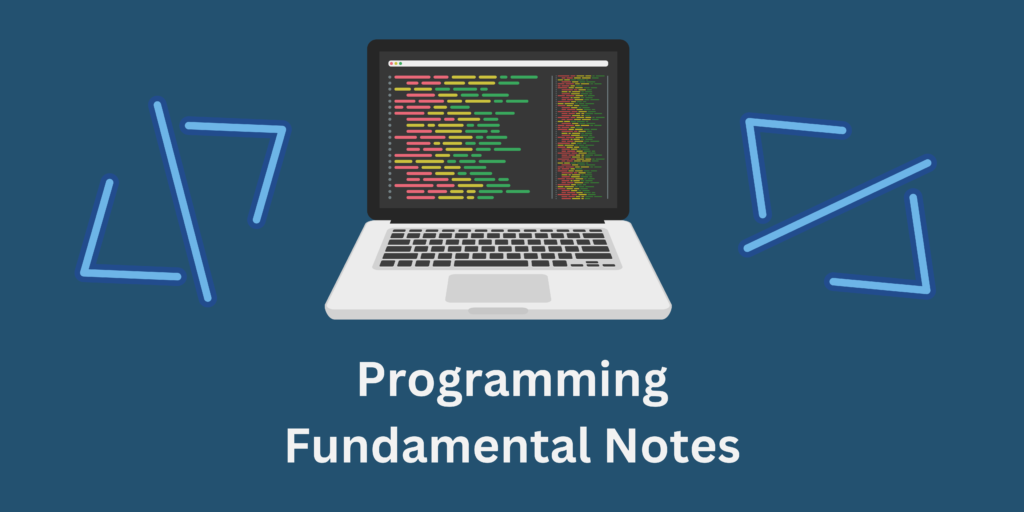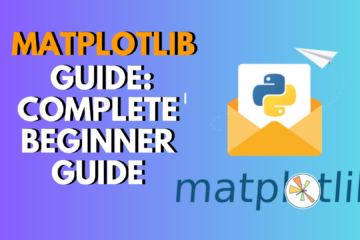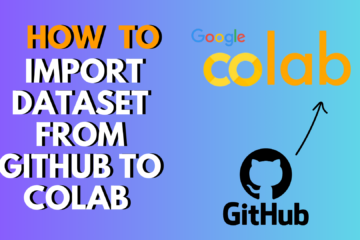
Here you will find a cheat-sheet of programming fundamentals. Programming fundamentals introduction is essential for anyone who wishes to learn how to code.
Programming fundamentals are the basic concepts and principles that underlie all computer programming languages. These concepts are essential for anyone who wants to learn how to code, whether they are a beginner or an experienced programmer.
What is Programming
Programming is the process of creating logicbased software that allows computers and other electronic devices to function. Your job as a programmer is to write programs that instruct computers and other devices to perform specific tasks.
computer program
The act of writing computer programs is called computer programming
programming languages
There are hundreds of programming languages, which can be used to write computer programs and following are a few of them: Java Python PHP Ruby Perl

Uses of Computer Programs
Computer programs are now used in almost every field, including agriculture, medicine, entertainment, defense, and communication.
A few applications of computer programs are listed below:
- MS Word, MS Excel, Adobe Photoshop, Internet Explorer, Chrome, and so on.
- In filmmaking, computer programs are used to create graphics and special effects.
- Ultrasounds, X-rays, and other medical examinations are performed using computer programs.
- SMS, Chat, and voice communication are all handled by computer programs in our mobile phones.
Computer Programmer
A computer programmer is someone who can write computer programs, or in other words, someone who can do computer programming.
We can identify computer programmers based on their knowledge of computer programming languages as follows: C Programmer, Java programmer, Python programmer …etc
Algorithm VS Pseudocode VS Program
| Algorithm | Pseudocode | Program |
| A systematic logical approach is a well-defined, step-by-step procedure for solving a problem that a computer can use. | It is a simplified version of plain English programming code that uses short phrases to write code for a program before it is implemented in a specific programming language. | It is exact code written for the problem that adheres to all of the programming language’s rules. |
Elements of PLs
Like English has a predefined grammar that must be followed in order to write English statements correctly.
Similarly, most Human Interface Languages (Hindi, English, Spanish, French, etc.) are composed of various elements such as verbs, nouns, adjectives, adverbs, propositions, and conjunctions, among others.
Computer Programming Languages, like Human Interface Languages, are composed of several elements.
These fundamental components are as follows: Programming Environment, Basic Syntax, Data Types, Variables, Keywords, Basic Operators, Loops, Numbers, Characters, Arrays, Strings
Other Programming Concepts
- Syntax: The syntax of a programming language is a set of rules that dictate how code should be written. It’s important to follow the syntax rules of the language you are using to avoid errors.
- Variables: Variables are used to store data in a program. They have a name, a data type, and a value. For example, you could create a variable called “age” with a data type of “integer” and a value of 25.
- Control Structures: Control structures are used to control the flow of a program, such as if statements, for loops, and while loops.
- Data Types: Data types define the type of data that a variable can hold, such as numbers (integers, floats), strings, and booleans.
- Control flow: Control flow statements are used to control the execution of a program. Examples include “if” statements, “for” loops, and “while” loops.
- Functions: Functions are blocks of code that can be called from other parts of the program. They can take inputs (called arguments) and return outputs.
- Data structures: Data structures are used to organize and store data in a program. Examples include arrays, lists, and dictionaries.
- Debugging: Debugging is the process of finding and fixing errors in a program. This can involve using tools like print statements, debuggers, and logging.
- Object-oriented programming: Object-oriented programming (OOP) is a programming paradigm that emphasizes the use of objects, which are instances of classes that encapsulate data and behavior.
- Arrays and Lists: Arrays and lists are collections of data that can be stored in a single variable. They can hold multiple values of the same data type, such as a list of numbers or a list of strings.
- Dictionaries: A dictionary is a collection of data that contains key-value pairs. It allows you to store and retrieve data based on a unique key, rather than just an index.
- Classes and Objects: Classes and objects are a way to organize code and data into reusable structures. A class defines a blueprint for creating objects, and an object is an instance of a class.
- Recursion: Recursion is a programming technique that involves a function calling itself. It can be used to solve problems that can be broken down into smaller, similar problems.
- Error Handling: Error handling is the process of identifying and responding to errors that occur in a program. It involves using techniques such as try/except blocks to catch and handle errors.
More programming basics
Algorithms: Algorithms are step-by-step procedures for solving problems. They are a fundamental concept in computer science and programming.
Libraries and frameworks: Libraries and frameworks are pre-written code that can be used to simplify programming tasks. Examples include NumPy, React, and TensorFlow.
Operators: Operators are symbols or words that perform mathematical or logical operations on data, such as + (addition), – (subtraction), * (multiplication), / (division), and == (equality).
Comments: Comments are notes that programmers can leave in their code to explain what it does, how it works, or to provide other helpful information.
Input/Output: Input is information that a program receives from the user, and output is information that a program sends back to the user.
Version Control: Version control is the process of managing changes to code over time. It involves using tools such as Git to keep track of changes, collaborate with others, and revert to previous versions if necessary.
APIs: APIs (Application Programming Interfaces) are a set of protocols and tools that allow different software applications to communicate with each other. APIs can be used to access data from other applications or to share data with other applications.
Regular Expressions: Regular expressions are patterns used to match and manipulate text. They can be used to search for specific text patterns or to extract specific information from a larger block of text.
Debugging Tools: Debugging tools are software tools used to debug code. They can help developers identify and fix bugs by providing information on the state of a program while it is running.
Memory Management: Memory management is the process of allocating and deallocating memory in a program. It involves managing the memory used by a program to ensure that it runs efficiently and does not run out of memory.
Software Development Life Cycle: The Software Development Life Cycle (SDLC) is a process used to develop software. It involves several stages, including planning, analysis, design, implementation, testing, and maintenance.
Multithreading: Multithreading is a programming technique that allows multiple threads of execution to run simultaneously within a single program. This can be used to improve program performance and responsiveness.
Networking: Networking is the process of connecting different computers and devices together to share resources and data. Programming for networking involves understanding network protocols and using programming languages and libraries to communicate over networks.
Graphical User Interfaces: Graphical User Interfaces (GUIs) are visual interfaces that allow users to interact with a program. Programming for GUIs involves creating windows, buttons, menus, and other visual components that users can interact with.
Security: Security is an important consideration in programming, as it involves protecting programs and data from malicious attacks. Programming for security involves understanding common security threats and using programming techniques to mitigate those threats.
Data Structures: Data structures are ways of organizing and storing data in a program. Common data structures include arrays, linked lists, stacks, and queues.
Performance Optimization: Performance optimization involves improving the speed and efficiency of a program. This can involve techniques such as using caching, minimizing I/O operations, and optimizing algorithms.
Testing: Testing is an important part of programming, as it involves verifying that a program works as intended and does not contain errors. Testing involves techniques such as unit testing, integration testing, and system testing.
Documentation: Documentation is an important part of programming, as it helps other developers understand how a program works and how to use it. Documentation can include comments in the code, user manuals, and other types of written documentation.
Concurrency: Concurrency is a programming technique that allows multiple tasks to be executed simultaneously. Concurrency involves techniques such as parallelism, asynchronous programming, and coroutines.
Design Patterns: Design patterns are reusable solutions to common programming problems. Design patterns can be used to improve code quality and maintainability, and include patterns such as the Singleton pattern, Observer pattern, and Factory pattern.
Conclusion
Learning programming languages such as Java, Python, C++, HTML, and CSS are examples of programming fundamentals. You must also be familiar with data types, variables, control structures, loops, and functions.
Once you’ve mastered the fundamentals of programming, you can progress to more advanced concepts like data structures, algorithms, and object-oriented programming.
Learn more

- How to Create a Subdomain in Hostinger 2026 & Install WordPress on It (Beginner Guide)
- CSS Palette Generator – Create, Download & Use Color Palettes for Websites
- Free Tools for KDP for Images (Best Free Options for Amazon Self-Publishers)
- Free Keyword Research Tool for KDP (2025 Guide for Beginners)
- Data Annotation Online Jobs on Mercor: How to Apply + Get Paid Remote Work




6 Comments
C++ Application Development Services · May 3, 2023 at 4:52 pm
Hello There. I found your blog using msn. That is a very neatly written article.
I will make sure to bookmark it and come back to
learn extra of your useful info. Thank you for the post.
I’ll certainly comeback.
aspor.ua · May 13, 2023 at 3:18 am
Hi there! This article could not be written much better!
Going through this post reminds me of my previous roommate!
He continually kept preaching about this. I’ll forward this article to him.
Pretty sure he will have a good read. Many thanks for sharing!
https://aspor.ua/ru/zapchasti-dlya-telefonov · May 13, 2023 at 1:10 pm
Good day! I know this is kinda off topic however I’d figured I’d ask.
Would you be interested in trading links or maybe guest authoring a blog post or vice-versa?
My blog covers a lot of the same subjects as yours and I feel we
could greatly benefit from each other. If you’re interested feel free to send
me an e-mail. I look forward to hearing from you!
Wonderful blog by the way!
enamtechsolutions.com · May 14, 2023 at 1:29 pm
whoah this blog is excellent i love reading
your articles. Stay up the great work! You understand, a lot of individuals are searching around for this info,
you could help them greatly.
Memory cards and USB Flash · October 3, 2023 at 7:17 pm
I’m not sure why but this blog is loading extremely slow
for me. Is anyone else having this problem or
is it a problem on my end? I’ll check back later on and
see if the problem still exists.
daridarek · October 9, 2023 at 8:49 am
We are trying to make it more rapid. We are sorry for this problem. We hope the problem is solved now.